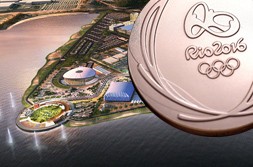2016 Summer Olympics Are Greenest Ever

By April Fischione
The Olympic Games originated in ancient Greece over 3,000 years ago and were named after their initial location, Olympia. According to legend, Hercules, the son of Zeus and the first Olympic athlete, founded the Games to honor his father. The Olympic Games were on a hiatus from 393 A.D. until 1896 when Baron Pierre de Coubertin reinstated them and hosted 280 participants competing in 43 events in Athens, Greece. The Games have changed significantly since then, expanding to feature over 11,000 athletes competing in 28 events this summer in Rio de Janeiro, Brazil.
Be the Green Team, Not the Mean Team
Companies increasingly strive to make their products more ecofriendly and green, so it should come as no surprise that the hosting countries of the Olympic Games are doing the same.
The 2012 London Olympics, which had sustainability as their main focus, were believed to be the greenest of the Games at that time. In preparation London planted 2,000 native trees and 300,000 wetland plants. They also cleaned up contaminated soil. Food vendors used compostable packaging to reduce waste, and the country drew nearly 10 percent of its power for the Games from renewable sources.
Rio sought to mitigate, and create climate benefits for, two million tons of Games emissions. Brazil went through external audits to assure their sustainability efforts, which included providing sustainably sourced meat and vegetarian options to athletes, reducing the volume of material and energy its workforce needed to put on the Olympics, and sorting through waste to recycle everything they could.
In Rio, Even the Gold Was Green
The winners’ medals did not escape scrutiny, either. The gold medals were made from gold that was extracted without the use of mercury and produced according to sustainability criteria. The silver and bronze medals were made from 30 percent recycled materials, and the ribbons used to suspend the medals all came from recycled plastic bottles. The podiums, which were made from organic materials, were designed to be reused as furniture after the Games. Organizers even went so far as to eliminate the flower bouquets medalists are traditionally awarded, instead presenting medalists with carved wooden statues of the Rio Olympics logo.
In the wake of widespread reports of contamination and unsanitary conditions in Rio de Janeiro over the last year, it was truly incredible to look at the before and after images of the city and see all of the progress they made to make their Olympic Games the greenest ever.
CLASSROOM DISCUSSION
- What other steps can the next host city take to make the Games green?
- Where are the next Winter and Summer Olympic Games to be held?
VOCABULARY
- Contamination
- Sustainability

